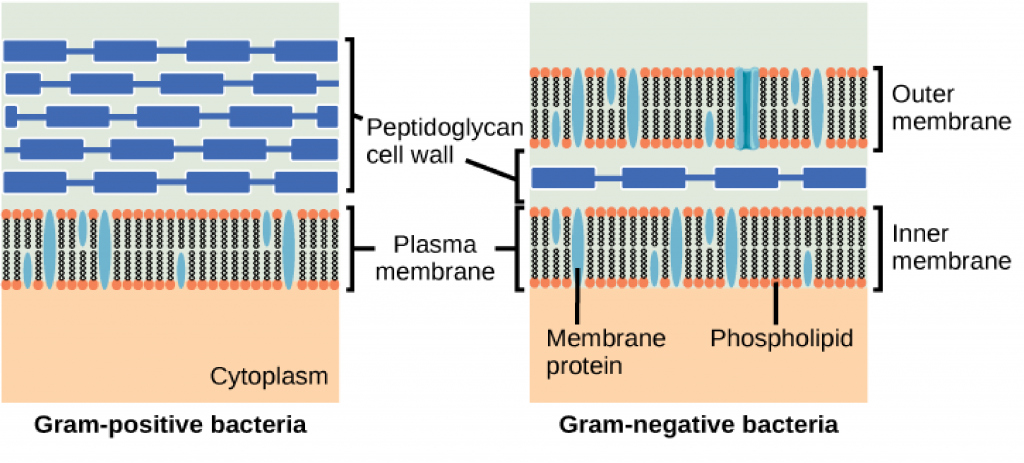

Let us start with peptidoglycan, since it is an ingredient that both bacterial cell walls have in common.

And lastly, the bacterial cell wall can contribute to the pathogenicity or disease –causing ability of the cell for certain bacterial pathogens. That is a lot of pressure for the plasma membrane to withstand! The cell wall can keep out certain molecules, such as toxins, particularly for gram negative bacteria. Studies have actually shown that the internal pressure of a cell is similar to the pressure found inside a fully inflated car tire. Since water can freely move across both the cell membrane and the cell wall, the cell is at risk for an osmotic imbalance, which could put pressure on the relatively weak plasma membrane. It protects the cell from osmotic lysis, as the cell moves from one environment to another or transports in nutrients from its surroundings. It also helps maintain the cell shape, which is important for how the cell will grow, reproduce, obtain nutrients, and move. The bacterial cell wall performs several functions as well, in addition to providing overall strength to the cell.

The cell walls of eukaryotic microbes are typically composed of a single ingredient, like the cellulose found in algal cell walls or the chitin in fungal cell walls. But both bacterial cell wall types contain additional ingredients as well, making the bacterial cell wall a complex structure overall, particularly when compared with the cell walls of eukaryotic microbes. This particular substance hasn’t been found anywhere else on Earth, other than the cell walls of bacteria. It’s an additional layer that typically provides some strength that the cell membrane lacks, by having a semi-rigid structure.īoth gram positive and gram negative cell walls contain an ingredient known as peptidoglycan (also known as murein). It involves a simple staining procedure.\)Ī cell wall, not just of bacteria but for all organisms, is found outside of the cell membrane. The first way, which is particularly relevant in medicine, is related to the outer covering of the cell. Some types also have a third outer layer called a capsule.īacteria can be separated into categories based on various different features. Each cell is generally contained within a cell membrane, which itself is contained within a protective cell wall. This means that their genetic material is ‘loose’ within each cell. Although, the colonies they form are visible.īacteria are prokaryotic, which means that they exist as single cells, although they form groups known as colonies. Most individual bacterial cells – an individual ‘bacterium’ – are too small to be seen with the human eye. Various sources suggest there may be as many as one trillion species – although the vast majority of these have not yet been discovered. They are one of the first life forms to exist on Earth and have been around for approximately three billion years.


 0 kommentar(er)
0 kommentar(er)
